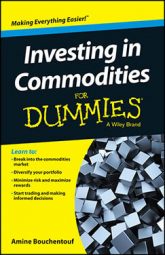One of the reasons MLPs are great for commodities investing is that, unlike regular corporations, they're taxed only once. Many publicly traded companies are subject to double taxation: They're taxed at the corporate level as well as at the shareholder (individual) level. Not so with MLPs.
Because of congressional legislation, any MLP that derives 90 percent or more of its income from activities related to the production, distribution, and transformation of commodities qualifies for this tax-exempt status.
The income that an MLP uses to qualify for tax advantages is known as qualifying income. If an MLP can prove its qualifying income, it can "pass through" its income tax-free to its shareholders, who are then responsible for paying whatever taxes are appropriate for them. This is why MLPs are sometimes referred to as pass-through entities.
Curious to see how this tax advantage plays out in the real world? Suppose that you're in a 35 percent tax bracket. You invest $1 in an MLP and $1 in a corporation. The corporation needs to generate $2.20 in income to distribute $1 of after-tax profits to you. The MLP, thanks to its favorable tax treatment, has to generate only $1.54 in income to give you back $1 of after-tax profits.
This tax status gives MLPs a competitive advantage over other publicly traded entities when they compete for assets. An MLP simply doesn't have to generate as much cash flow as a corporation to distribute similar levels of after-tax income to shareholders — and this fact has two possible implications. First, if it wants, the MLP can afford to overpay for an asset and still generate healthy cash flows for its investors. Alternatively, it can purchase an asset at a similar price from a competing corporation but generate more cash flow to investors because of its favorable tax treatment.
MLPs are required to distribute all available cash back to unit holders on a quarterly basis. When you own an MLP, you receive a K1 tax form, which is similar to the 1099 tax form you receive from a corporation.
Be sure to inform your accountant of your MLP investments in advance, because most K1 forms aren't mailed out to shareholders until February. This gives you only a few weeks to account for the MLP income in your taxes.

